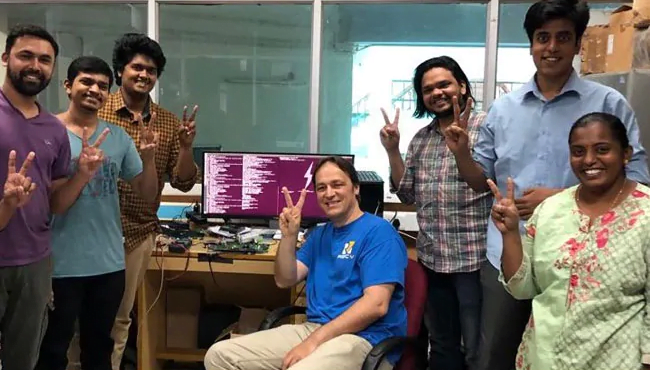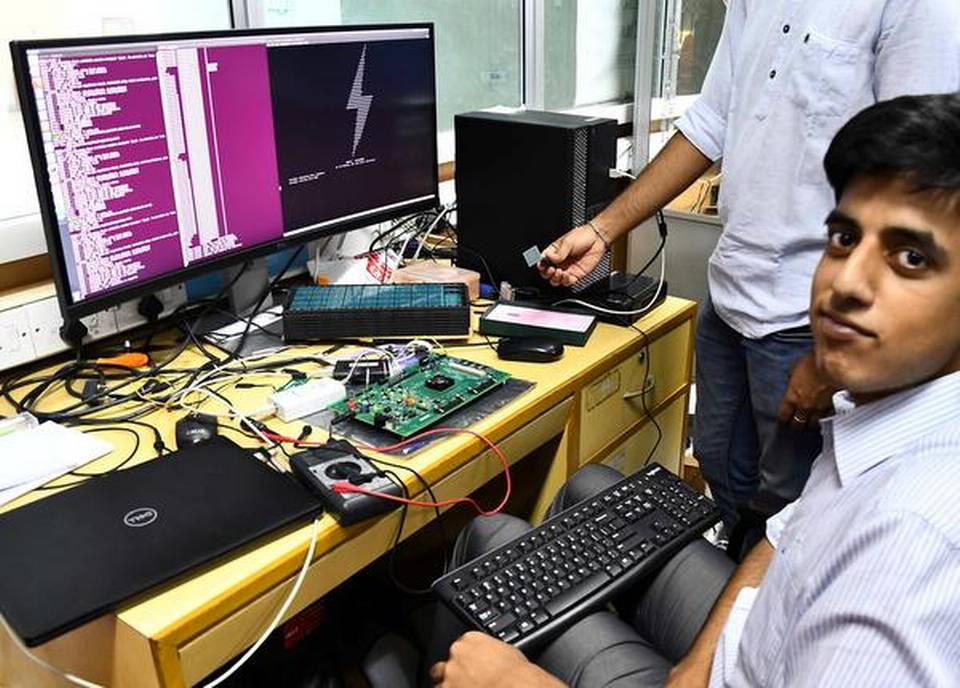
Information technology can make a good claim to being India’s biggest and most successful industry. Tech hubs such as Bengaluru and Hyderabad contribute more than 13% of gdp. The country’s computer-science graduates are lauded worldwide: the bosses of two of America’s biggest tech firms, Satya Nadella of Microsoft and Sundar Pichai of Google, were born and educated in India. It is also home to the fast, cheap Jio phone network which has made Indians the world’s biggest consumers of mobile data.
Yet although many Indians work with computers, very few are employed in building them. All the components used to create Jio’s network were imported. Bengaluru and Hyderabad live off dull business-process outsourcing and back-office management. Last year India imported $55bn of electronic goods. It exported just $8bn. The fact that India’s most celebrated industry depends entirely on imports in an era in which many countries are increasingly capricious about what goods they will allow to be exported makes some officials nervous. So India is attempting to build its own chips.
It is starting from close to zero. The only factory in India that makes semiconductors—the processors at the heart of all electronic gadgets—is a government-run outfit in the city of Chandigarh. It was built in 1983 in partnership with an American chip company that no longer exists. The fab, as chip-making factories are called (it is short for fabrication plant), is managed by the Department of Space, and makes specialised chips for military use. The Centre for Development of Advanced Computing (cdac), another government body, has designed some chips of its own, but got foreigners to make them.
In 2017 the Indian government approved $45m of funding for cdac to design a new collection of chips that would be built on top of a set of open-source technologies called risc–v. Unlike the chip designs of Intel or Arm, which are proprietary, risc–v designs are available to anyone with an internet connection to download free of charge, and to incorporate into their chip designs without a licence (see article). This means any resulting chips will be cheaper for cdac to produce, as they don’t have to pay royalties to Western companies. Their production will also be harder for foreign governments to disrupt. cdac has finished the design of its first risc–v chip, and will soon start manufacturing it.
The government is also funding a commercial chips project called Shakti, which uses risc–v too. Whereas cdac is building chips for government use and so keeping the final design secret, Shakti’s engineers will publish the final designs of their chips so that any other company can build upon them. G.S. Madhusudan of iit Madras, who leads the project, has started a company to make and sell Indian processors using Shakti’s designs. He says the chips made by the new company, called InCore, will cost less than imported chips. The Shakti project has already produced a chip to demonstrate its technology—the first commercial chip designed in India—using factories in Taiwan to do the physical manufacturing.

By lowering costs for Indian tech firms through open-source chips and by helping to develop a technical ecosystem, Mr Madhusudan hopes to keep more of India’s engineers at home, perhaps even starting new technology companies. Computer chips are finding their way into everything from household appliances to running shoes, and he believes India has a shot at making these lower-end processors.
The risc–v projects also aim to insulate India from geopolitics. That risc–v has become the first open-source chip design to reach a wide audience at the same time as America clamps down on semiconductor exports in the name of national security is not a coincidence. S. Krishnakumar Rao, the head of hardware design at cdac, says that eliminating the risk of a technology embargo is one of the primary reasons that India is pursuing its own semiconductor program. Chinese firms are adopting risc–v quickly too. Interest is also growing in Europe.
Developing an indigenous semiconductor industry will be hard, however. India does have talented engineers, but only from a handful of elite engineering institutes. The country’s infrastructure is nowhere near the standards of southern China and Taiwan, where most of the world’s chips are made. Foxconn, Apple’s main contractor, is investing billions of dollars to make more iPhones in the southern state of Tamil Nadu, but in much of India reliable power, water and transport are harder to come by. The Indian government does not typically welcome foreign investment on the scale that would almost certainly be required to produce chips, computers and smart devices at scale. Although China is host to plenty of this sort of manufacturing, almost all the companies that carry it out are Taiwanese.
Then again, the incentives for success are strong, too. When India looks east, it sees Huawei, a Chinese tech giant, being cut off from American-made components as a result of the trade war. To the west, it sees its most talented engineers working in Silicon Valley. By pouring millions of dollars into Indian-made semiconductors, India’s government hopes to solve both problems at once. Credit economist.com. This article appeared in the Asia section of the print edition under the headline “Fab in India”